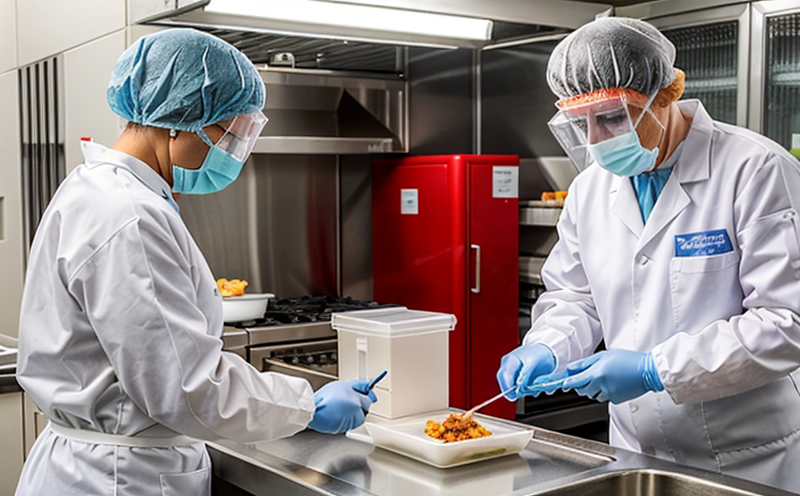ISO 22174 Nucleic Acid Amplification Techniques for Foodborne Virus Testing
The ISO 22174 standard provides a robust framework for detecting foodborne viruses using nucleic acid amplification techniques (NAAT). This service is crucial in ensuring the safety and integrity of the global food supply chain. The standard outlines procedures that are designed to enhance reliability, accuracy, and consistency across laboratories performing these tests.
Foodborne viruses pose significant health risks, particularly through contaminated water sources or improperly handled foods. They can lead to a variety of gastrointestinal illnesses, including norovirus, hepatitis A virus, and rotavirus infections. The standard specifies methodologies that utilize NAAT for detecting viral nucleic acids in food samples, which ensures early detection and rapid response.
The ISO 22174 protocol emphasizes the importance of specimen preparation techniques to avoid contamination and ensure accurate results. Sample collection is critical; it must be done under strict hygiene conditions to prevent cross-contamination between samples. Properly prepared specimens are then processed through extraction steps that isolate viral nucleic acids, enabling subsequent amplification.
The standard mandates stringent quality control measures throughout the testing process—from sample handling and preparation to the final analysis phase. This includes validating reagents used in the test procedure against known standards. Rigorous calibration of laboratory equipment ensures consistent performance across different batches of tests.
Compliance with ISO 22174 is essential for food manufacturers, retailers, and regulatory bodies alike who need reliable data to make informed decisions regarding product safety. By adhering strictly to the outlined procedures, laboratories can provide results that are accurate, repeatable, and comparable globally—a necessity given today’s interconnected global supply chains.
Implementing this standard also supports traceability in case of outbreaks by enabling quick identification of contaminated products and sources. This helps prevent further spread while allowing targeted interventions at various stages within the supply chain. Additionally, it strengthens consumer confidence through transparent communication about food safety practices.
The implementation of ISO 22174 enhances overall public health by providing a standardized approach to detecting potentially harmful pathogens in food products. It plays an integral role in safeguarding both human and animal health across industries that handle perishable goods such as dairy, meat, poultry, fruits, vegetables, and processed foods.
Adherence to this standard not only meets regulatory requirements but also demonstrates a commitment to maintaining high standards of quality assurance and continuous improvement. For organizations involved in food production or distribution, compliance helps build trust with consumers while ensuring operational efficiency by reducing unnecessary recalls or withdrawals due to suspected contamination.
Frequently Asked Questions
Benefits
Rigorous quality control procedures ensure consistent and reliable test results.
Standardized methodologies enhance the accuracy and precision of viral detection.
Promotes traceability, aiding in rapid identification and containment of outbreaks.
Builds consumer trust through transparent communication about food safety practices.
Industry Applications
The application of ISO 22174 extends beyond just laboratory settings; it is also applicable in various sectors including but not limited to pharmaceutical manufacturing, biotechnology research, and agricultural production. In these areas, ensuring the absence of foodborne viruses contributes significantly towards maintaining public health standards.
Use Cases and Application Examples
In practice, this service can be used for routine inspections at processing plants, monitoring imported goods, validating new product formulations, or responding to specific incidents like recalls. For instance, a dairy farm might use the standard during an outbreak of gastrointestinal illness among their herd to identify any potential contamination sources.





